Report

This article is part of Bain's 2021 Technology Report.
Regulatory scrutiny of “big tech” companies is growing worldwide. Platform business models have helped make the most prominent tech firms—the hyperscaler cloud tools and service providers—strong leaders in their respective markets and among the most valuable companies in the world.
Given the size, complexity, and profitability of these businesses, scrutiny of their behavior is understandable. That said, when it comes to mergers and acquisitions, much of the recent attention has focused more on the fear of potential abuse of market power rather than a fact-based review of M&A track records.
When the facts are reviewed, most big tech M&A spending actually benefits consumers and doesn’t hamper competition. That’s according to Bain’s analysis of all $300 million-plus acquisitions, totaling more than $150 billion, from 2005 to 2020 by the five US hyperscalers: Alphabet, Amazon, Apple, Facebook, and Microsoft (see Figure 1). We recognize, of course, that’s a provocative conclusion in the current climate. Here’s how we reached it. We conducted a series of double-blinded case studies based on data analysis, which assessed the effect of each acquisition on end consumers (did it drive down prices, increase access to innovative products or services, or improve the products or services themselves?); and market dynamics (did the level of competition increase, did the deal put pressure on incumbents to innovate, or did it result in more external investment?). (Scroll to the bottom of the article for details about the methodology.)
To date, most US hyperscaler M&A spending has benefited consumers or enriched market dynamics
Excluding deals from the past 18 months and the LinkedIn acquisition, which our analysis determined had a neutral effect on consumers and competition, we found that 72% of US hyperscaler M&A spending since 2005 created value for consumers. Competitive intensity and investment pace also increased after the majority of those deals. The share of hyperscaler M&A spending that benefited consumers rises to 89% when the Google and Microsoft acquisitions of Motorola’s and Nokia’s handset businesses, which were falling behind competitors and arguably no longer viable on their own, are removed from the mix.
The clear takeaway is that, while there are valid reasons to monitor technology M&A, policymakers should proceed with care to avoid stifling the innovation and consumer benefits these deals consistently bring.
Consumers enjoy the ride
Most big tech acquisitions end up benefiting consumers in at least one of three ways, according to our research.
Scaling up disruptive, low-cost ideas often results in lower prices for end customers. Amazon used its efficient supply chain and buying power to shrink Whole Foods’ price premium vs. conventional grocers, making healthy, fresh food more affordable for consumers (see Figure 2).
Amazon’s Whole Foods acquisition accelerated other grocers’ e-commerce plans, while reducing Whole Foods’ pricing premium
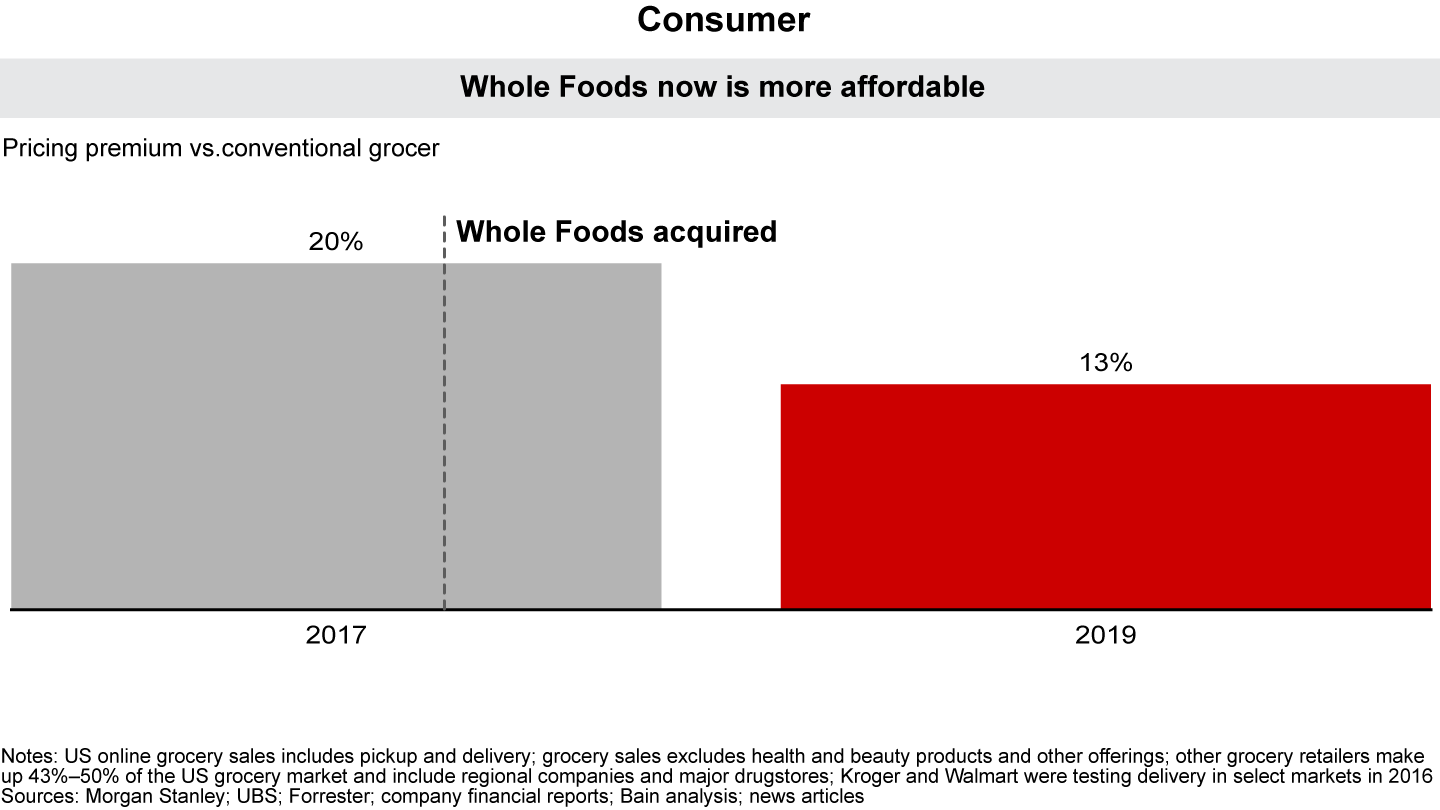
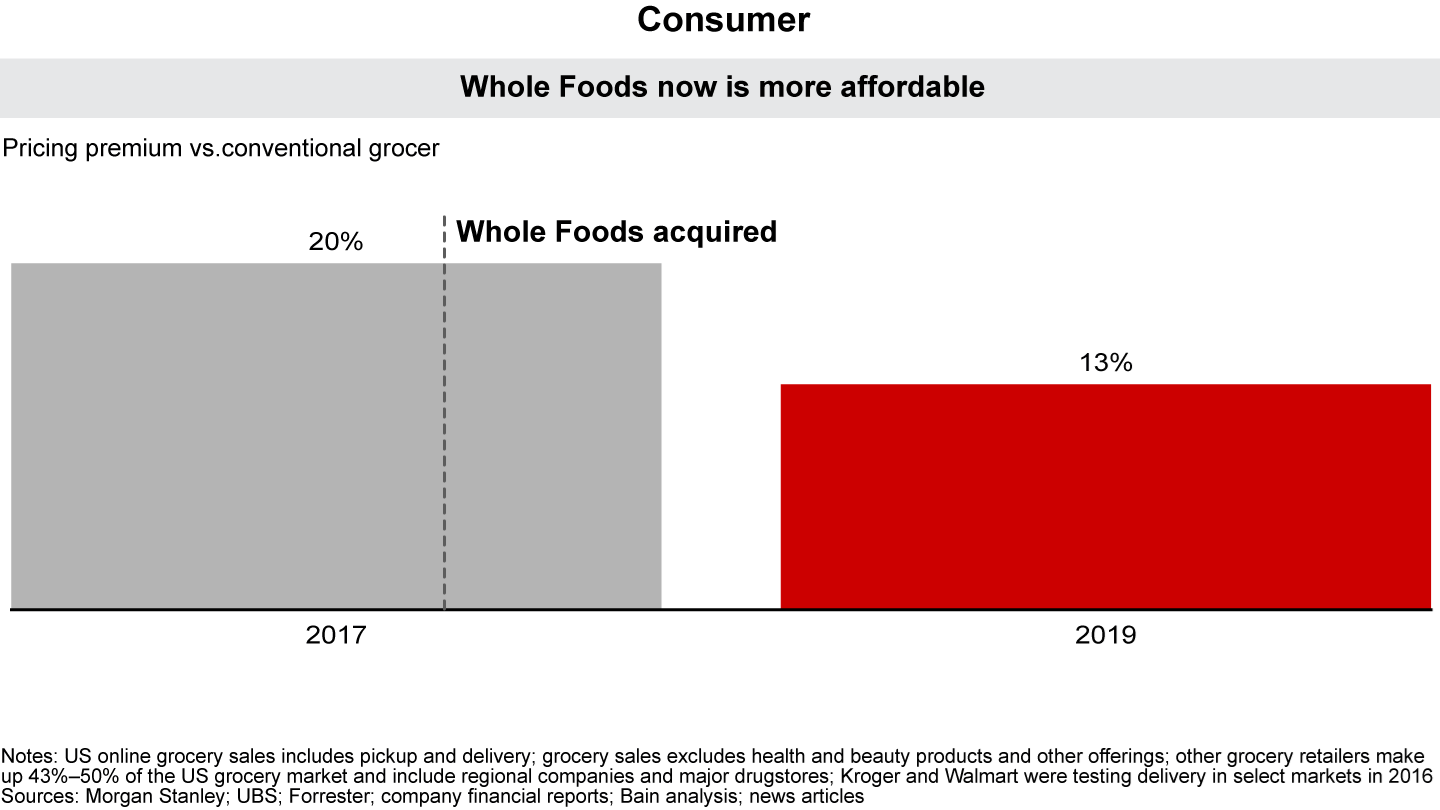
Amazon’s Whole Foods acquisition accelerated other grocers’ e-commerce plans, while reducing Whole Foods’ pricing premium
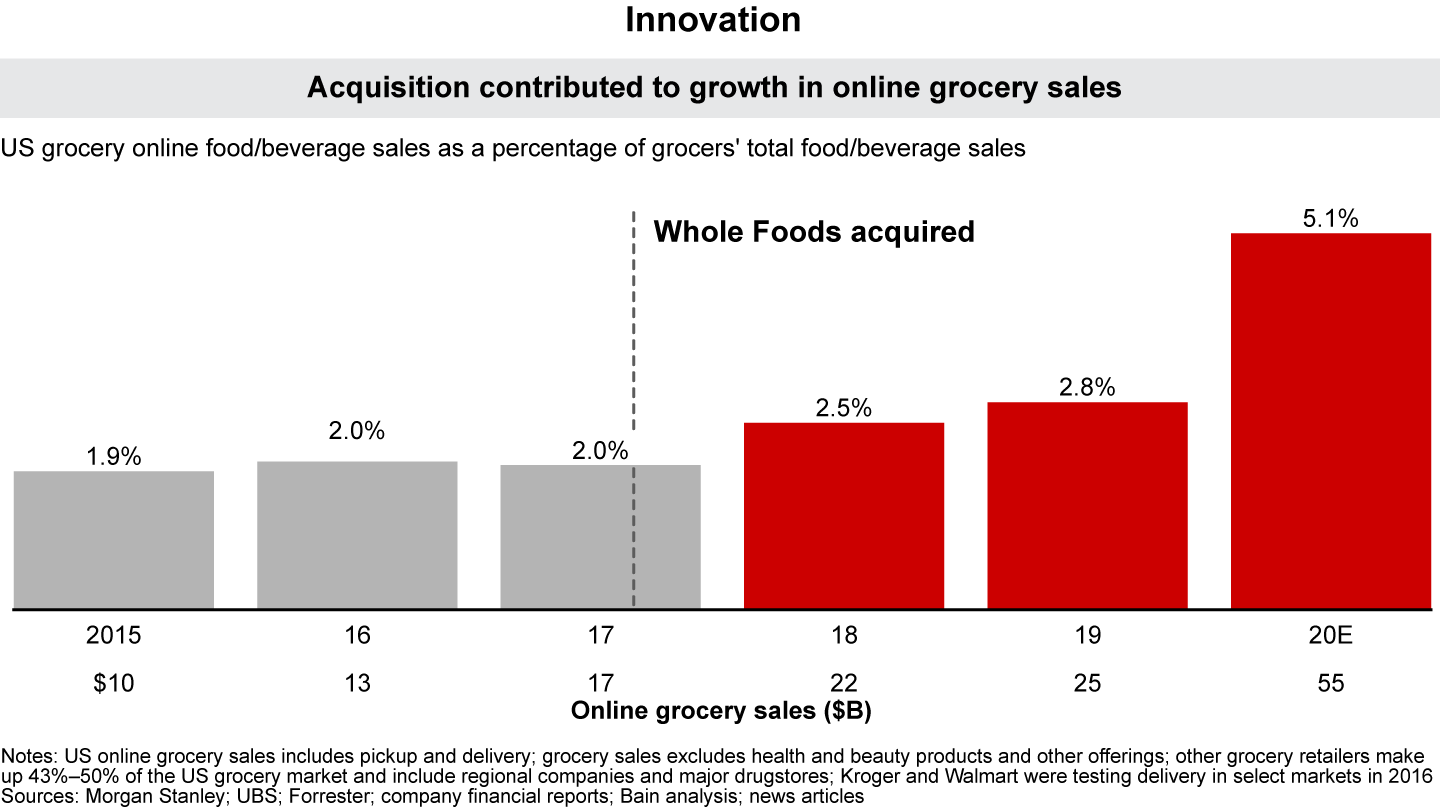
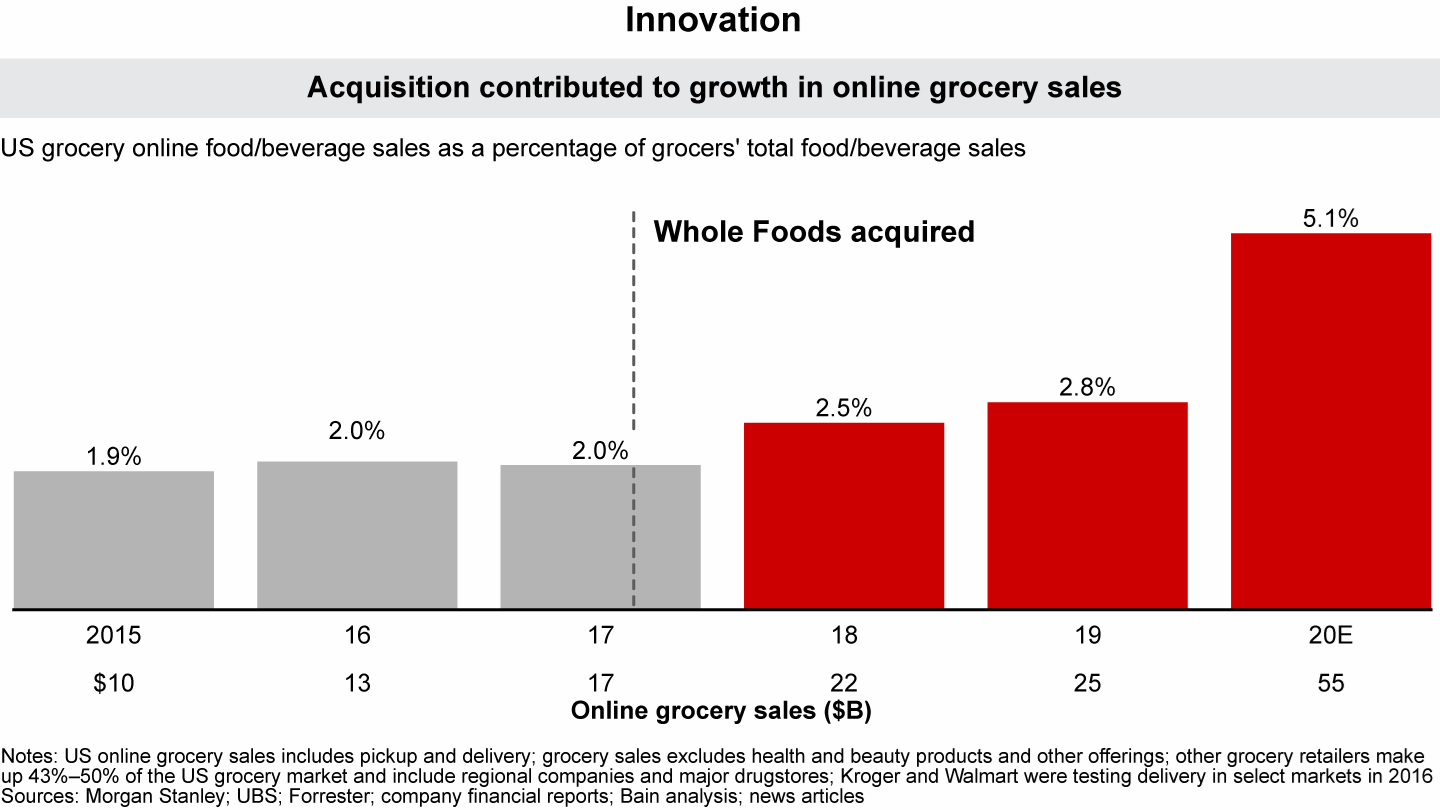
Amazon’s Whole Foods acquisition accelerated other grocers’ e-commerce plans, while reducing Whole Foods’ pricing premium
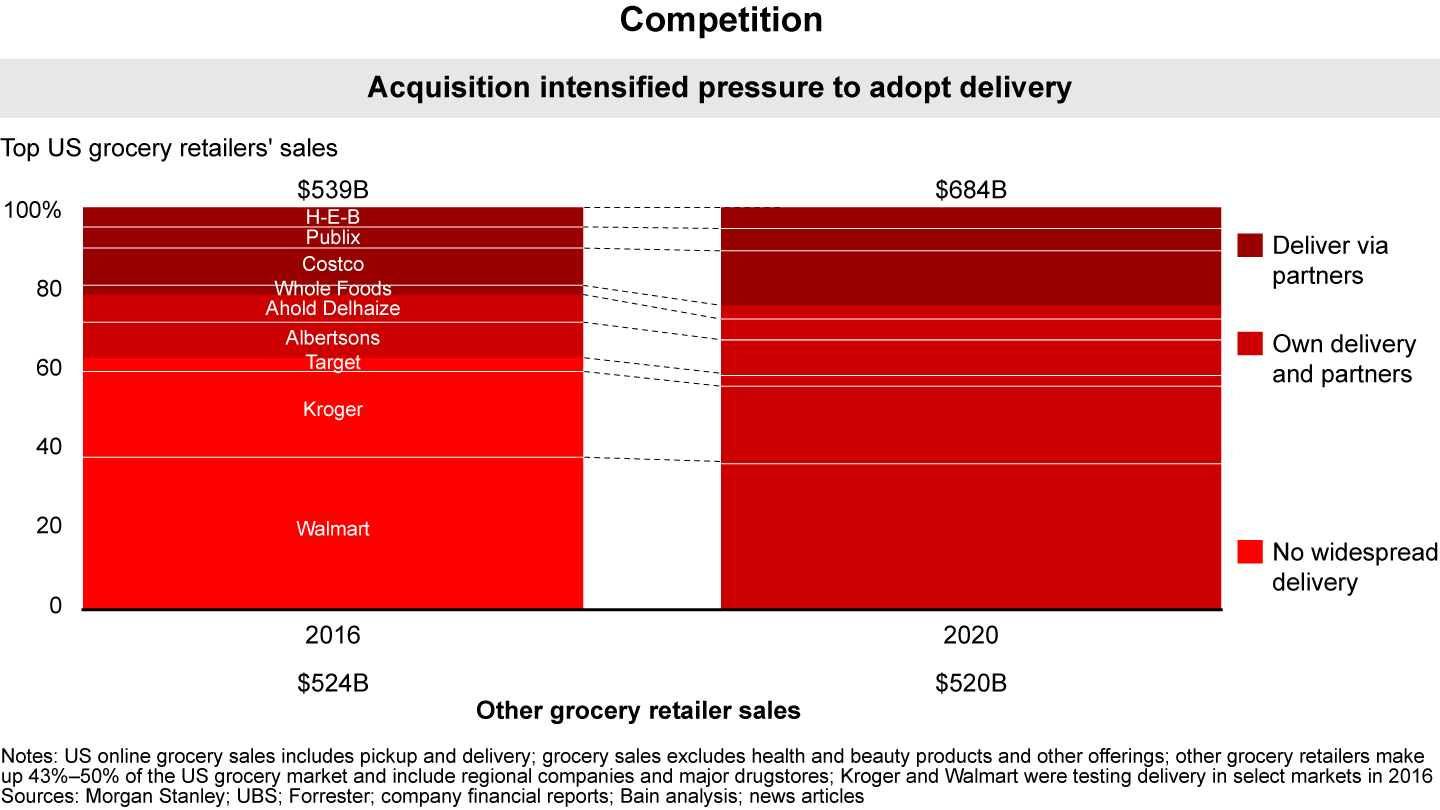
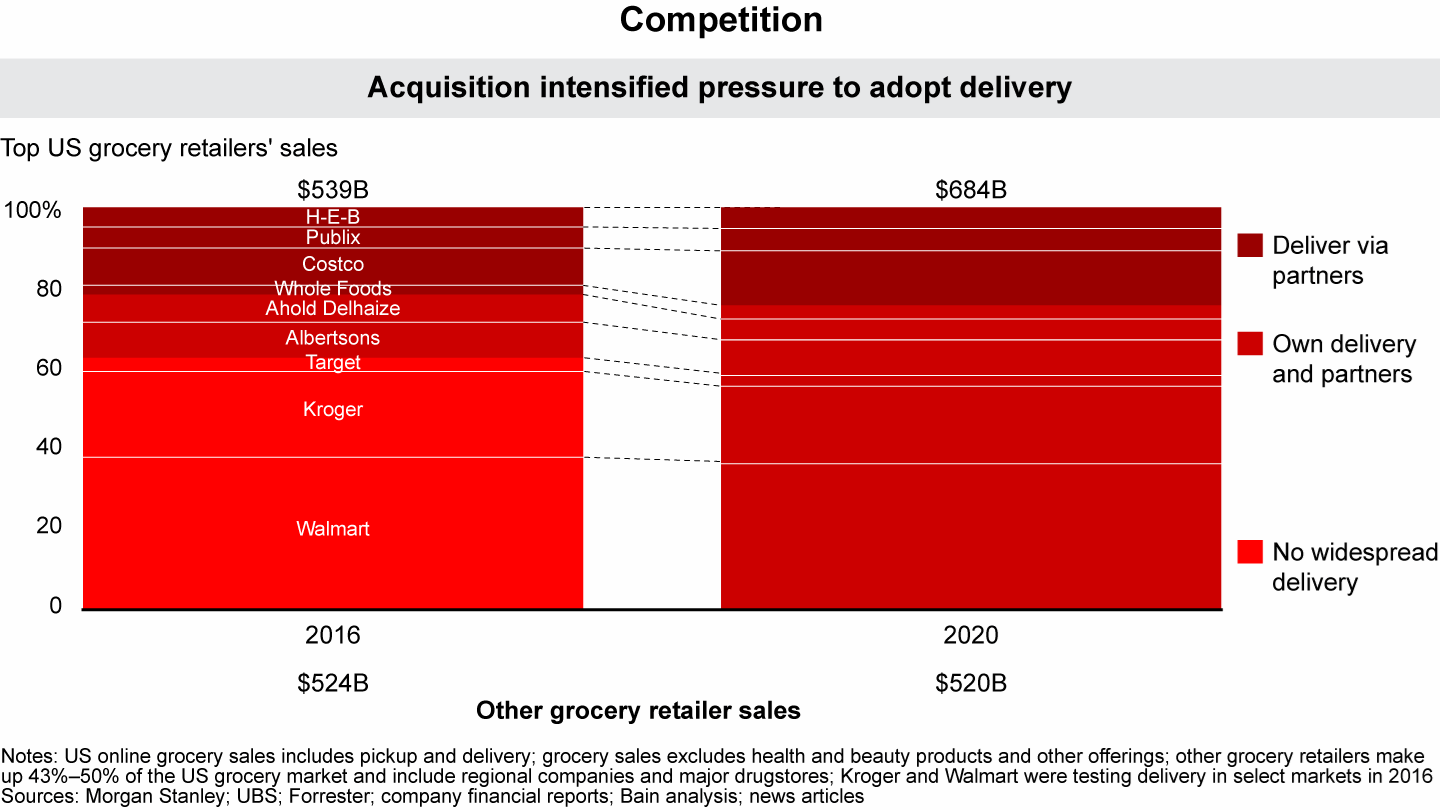
Big tech companies’ scale can also allow more people to access innovative concepts. Google catapulted YouTube onto an immense growth path that essentially created today’s digital video streaming market. Since its 2006 acquisition, streaming video has grown hand-in-hand with YouTube, expanding from about 800 million monthly active users of YouTube in 2012 to around 2.3 billion in 2020 (see Figure 3).
Amazon has also increased access to innovation through its dealmaking. The Whole Foods acquisition contributed to the growth of US grocers’ online food and beverage sales, which increased from 2% to 2.5% of US grocers’ total food and beverage sales the year after the deal. And Amazon’s acquisition of warehouse robotics company Kiva Systems reduced fulfillment times from an hour-plus to 15 minutes, shortening the time from click to delivery for consumers.
Google’s YouTube acquisition helped increase online video viewership worldwide
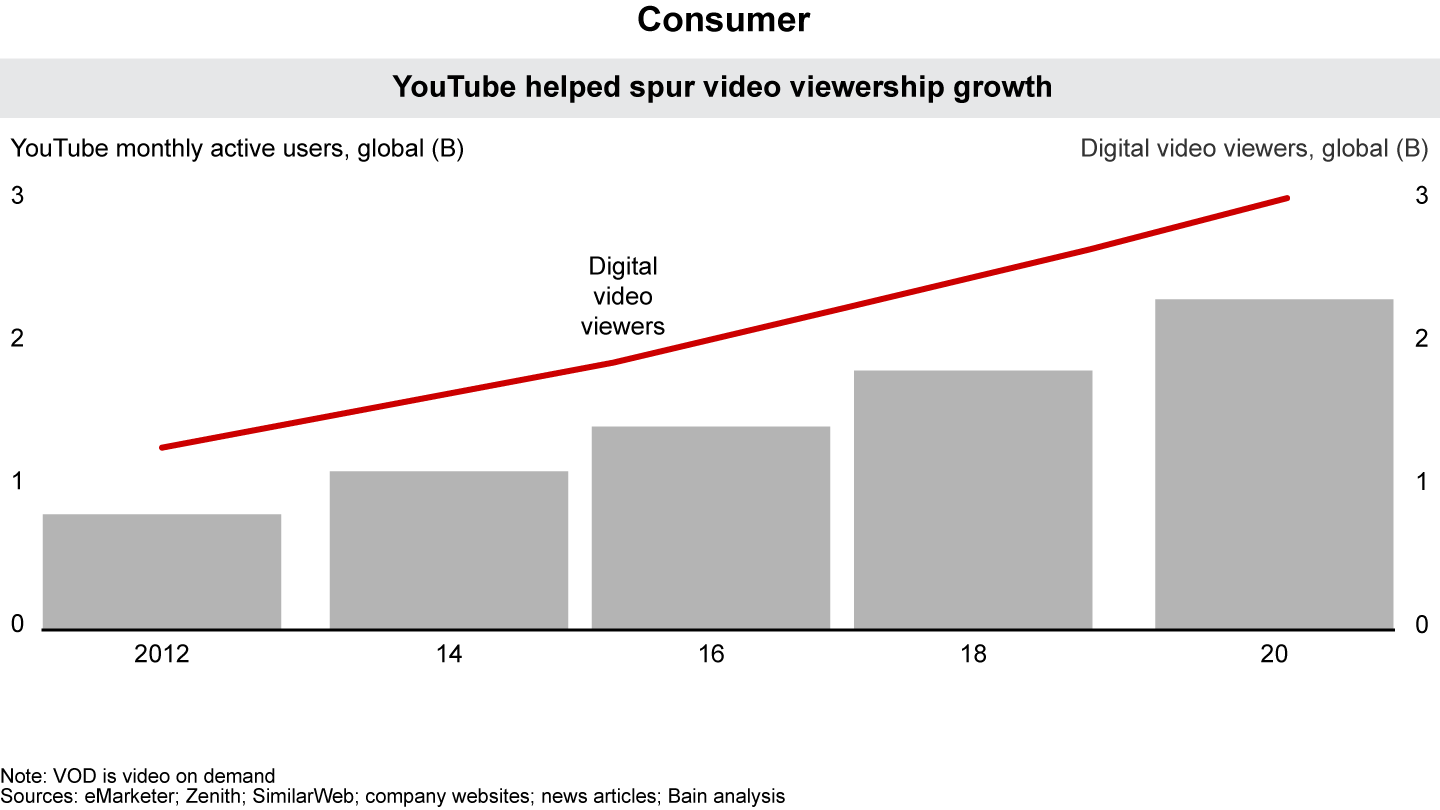
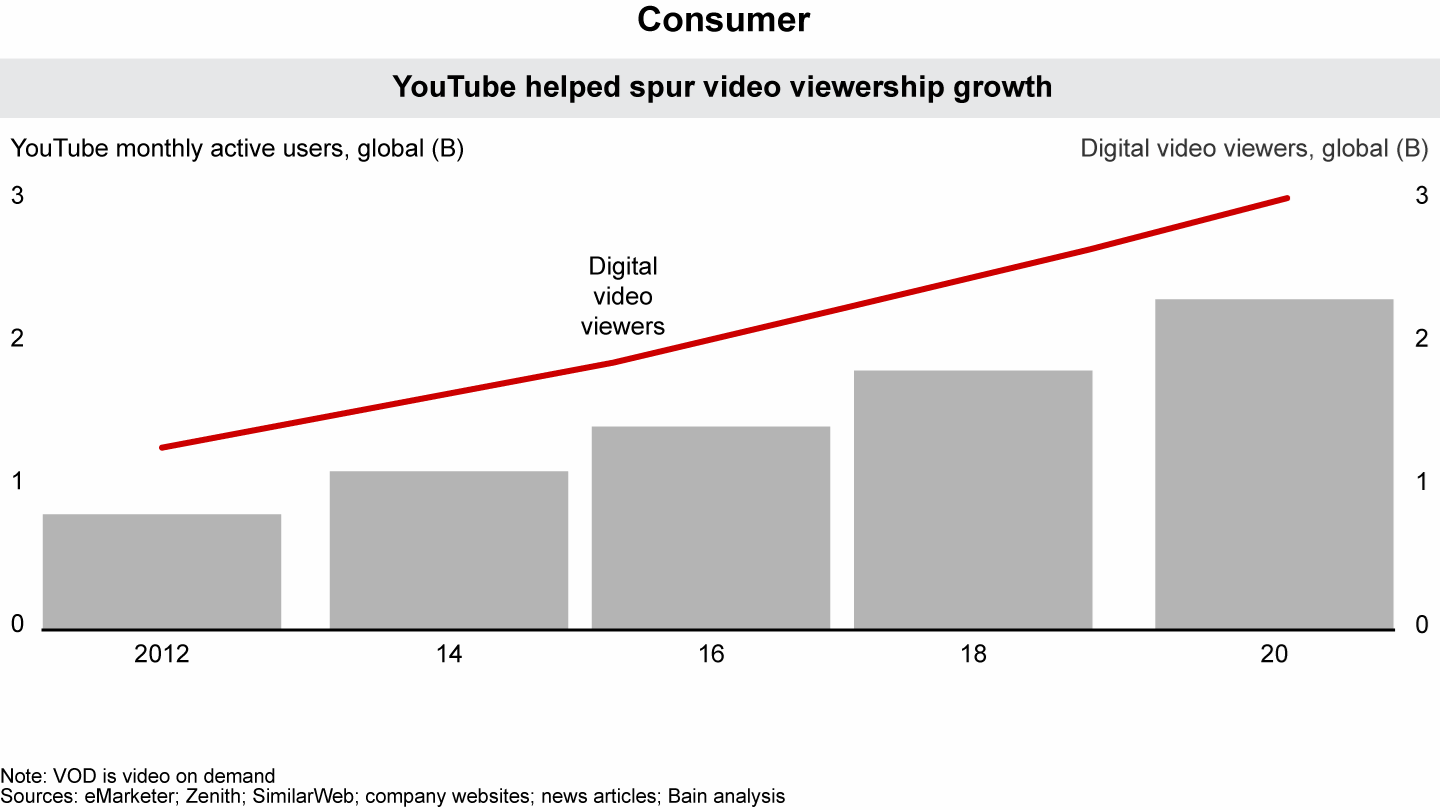
Google’s YouTube acquisition helped increase online video viewership worldwide
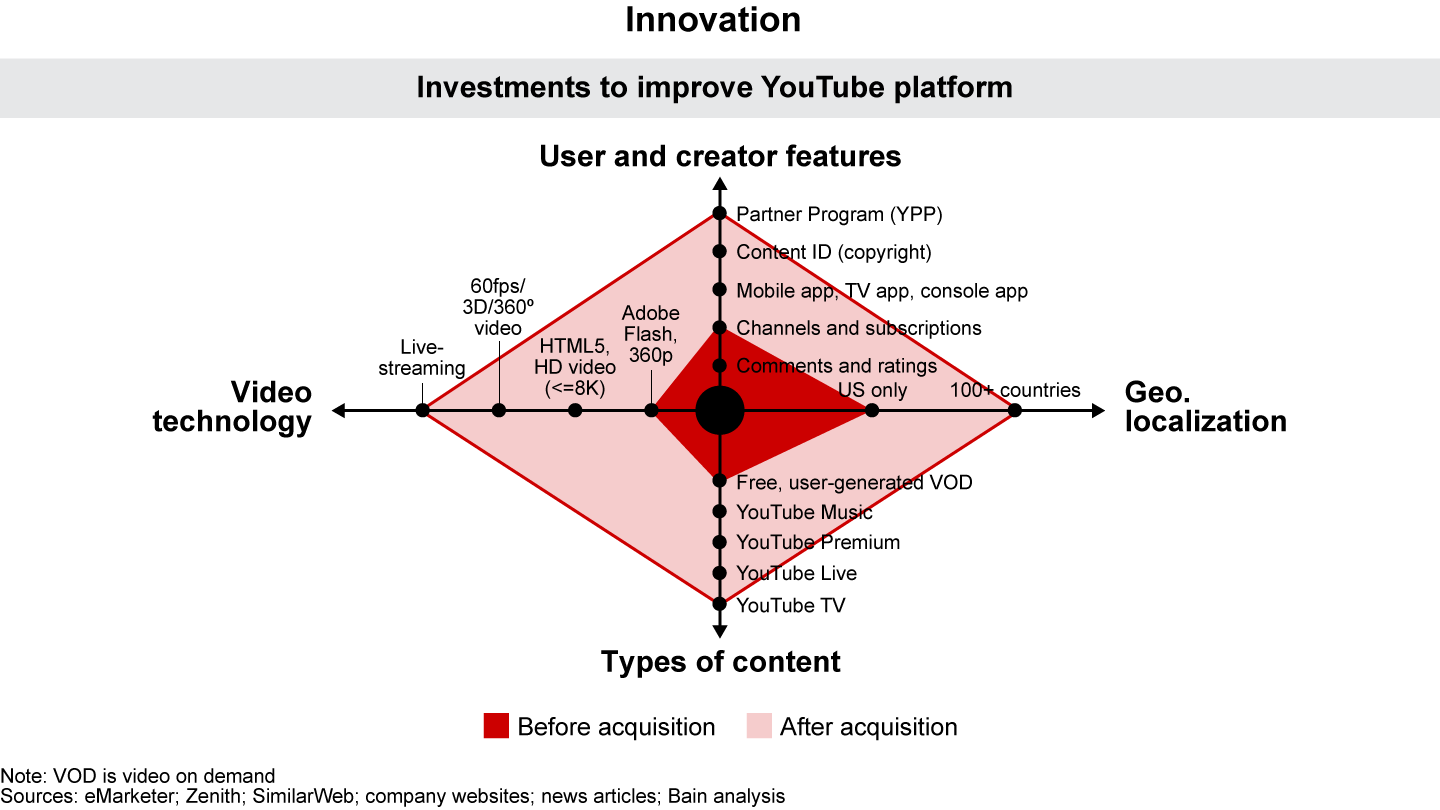
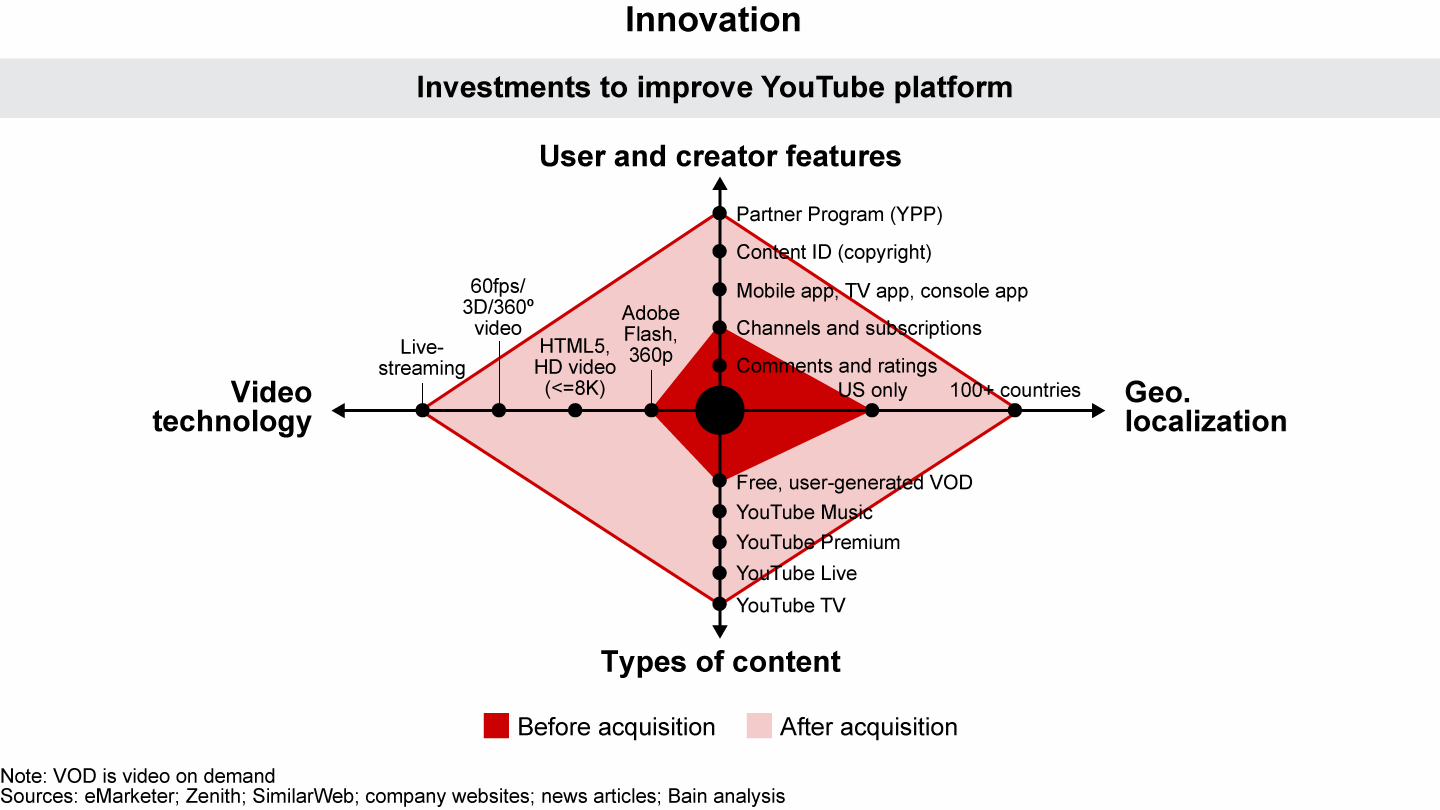
Google’s YouTube acquisition helped increase online video viewership worldwide
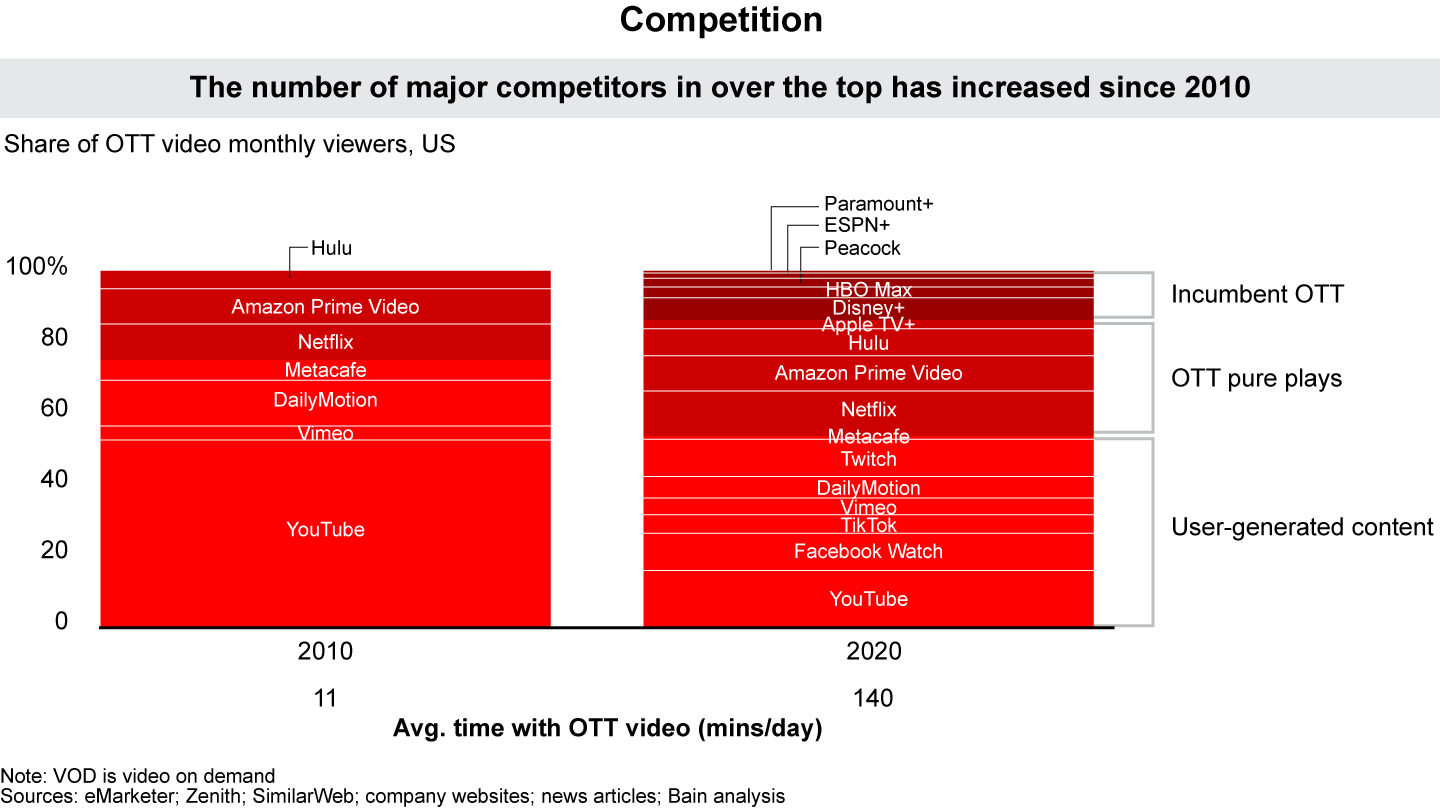
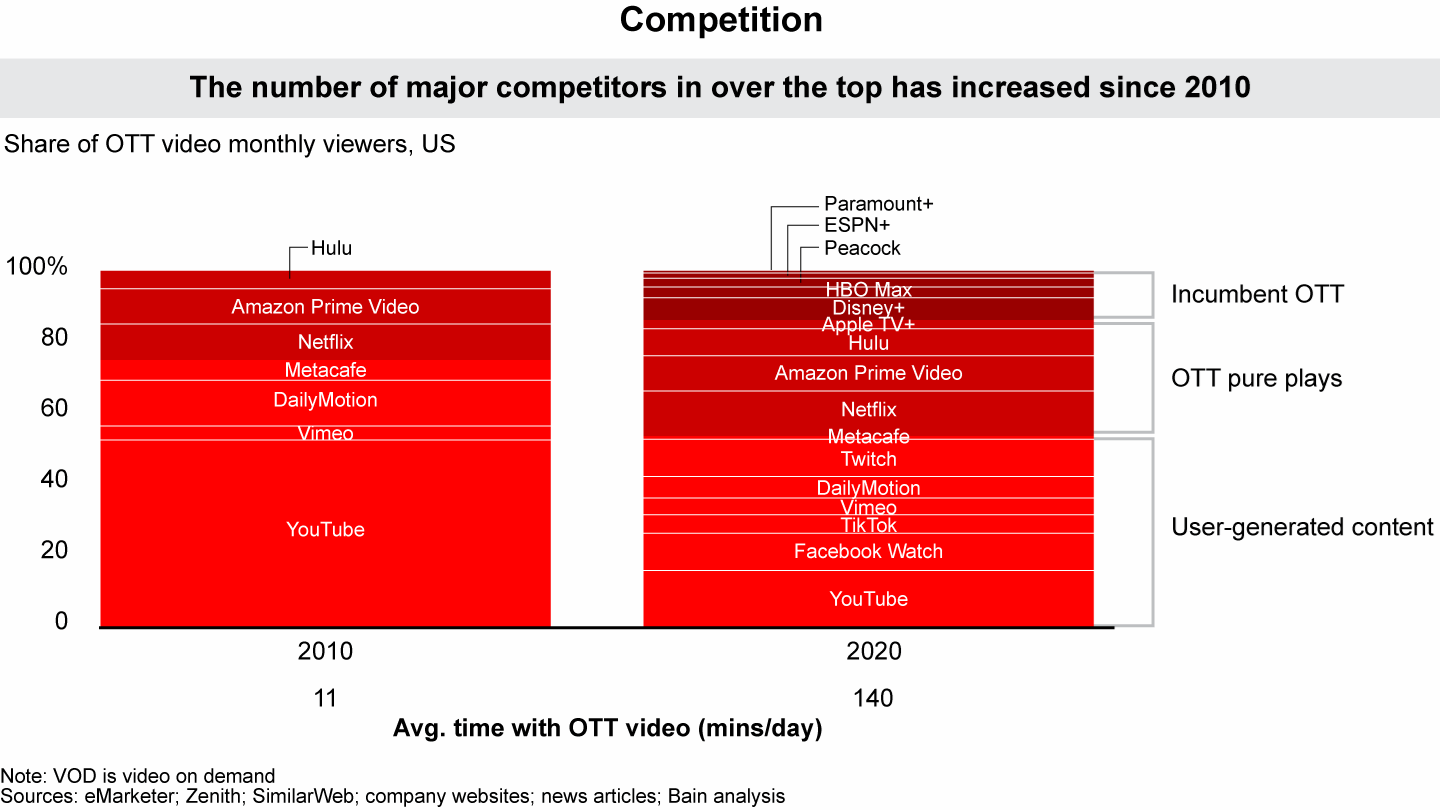
A third benefit is that tech acquirers frequently accelerate purchased companies’ pace of innovation by providing resources and the breathing room to keep experimenting. Facebook’s WhatsApp acquisition freed the messaging service to focus on the consumer experience and relieved the pressure to become profitable before it was ready. Under the wing of its parent company, WhatsApp rapidly expanded the app and launched features such as end-to-end encryption, payments, and B2B services (see Figure 4).
There are many examples of this. Amazon expanded Ring beyond connected doorbells and helped live-streaming service Twitch add new genres and partnerships. Google integrated Waze’s GPS navigation capabilities with music-streaming services and voice assistants. Facebook expanded virtual reality (VR) company Oculus’s offerings to include wireless VR. Microsoft improved the functionality of GitHub’s software development platform by adding features such as Codespaces, improving the site for developers.
After Facebook acquired WhatsApp, messaging prices continued to fall, the number of credible competitors increased, and WhatsApp expanded its offerings
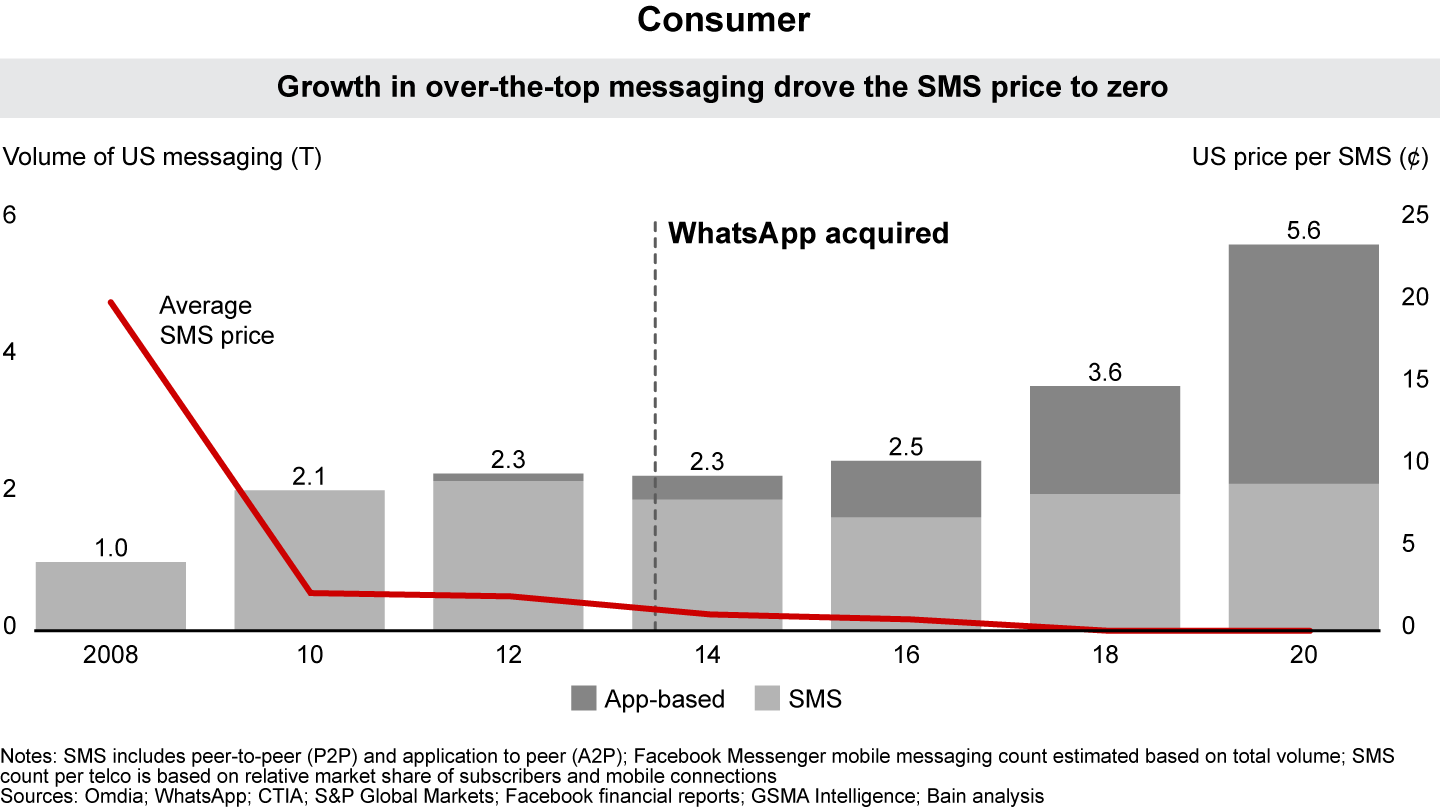
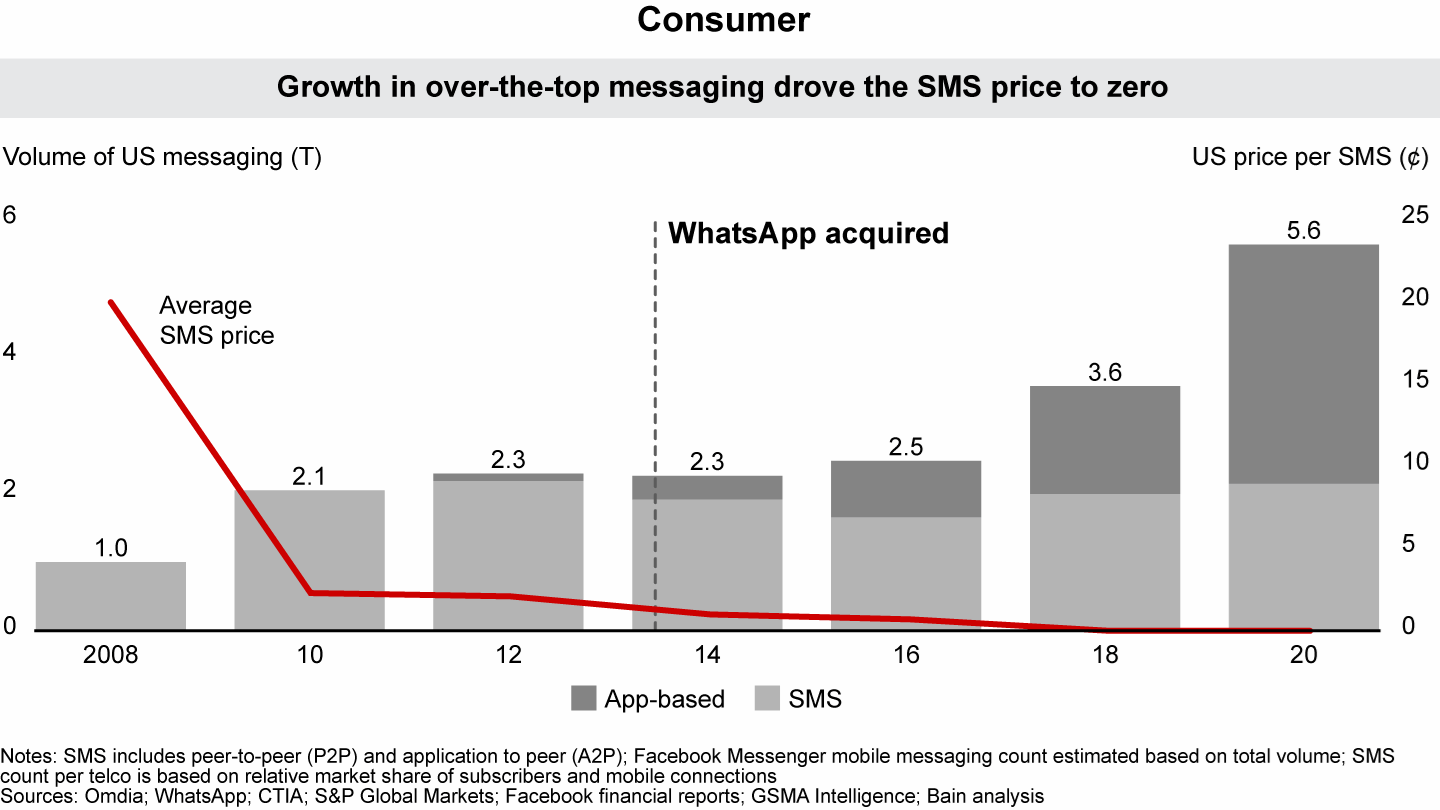
After Facebook acquired WhatsApp, messaging prices continued to fall, the number of credible competitors increased, and WhatsApp expanded its offerings
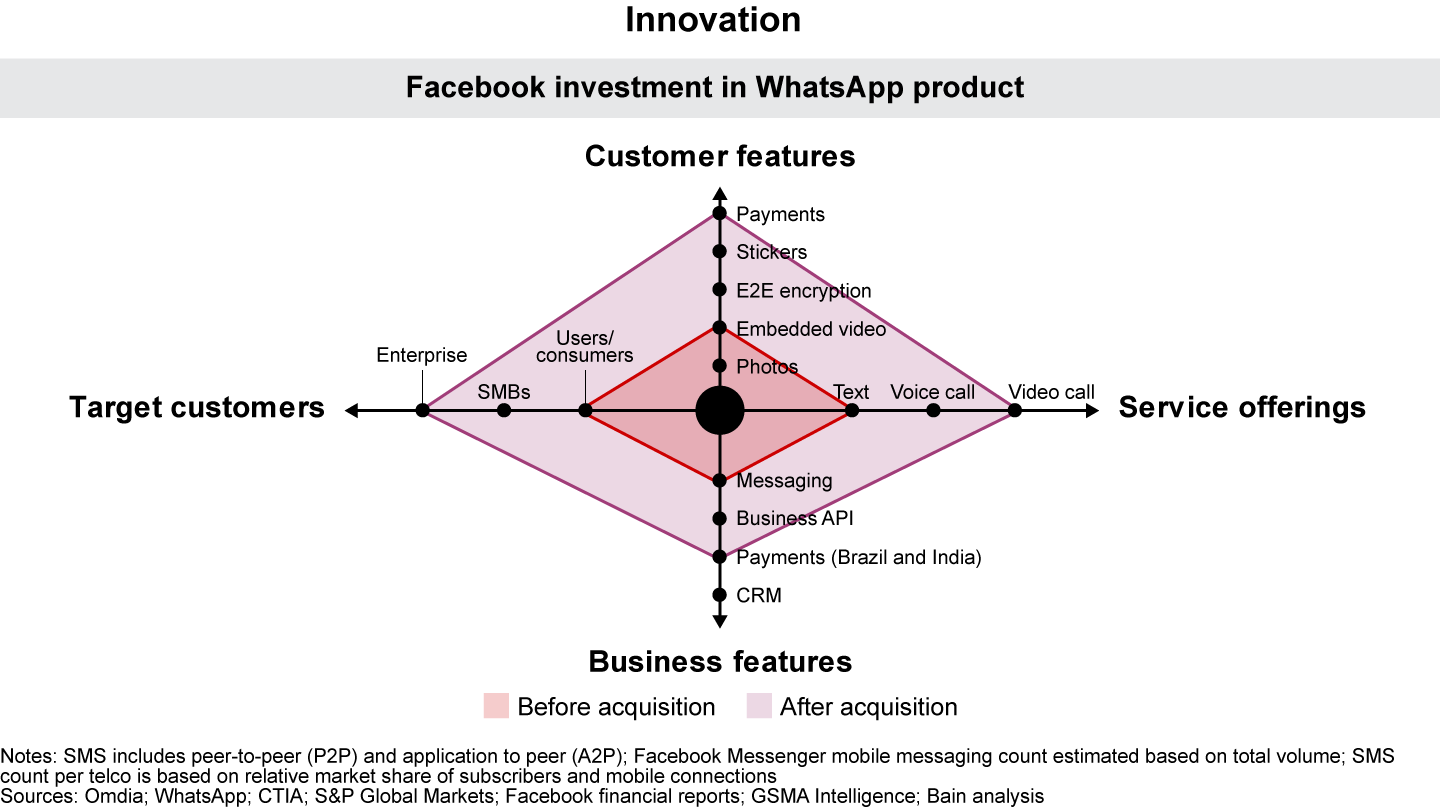
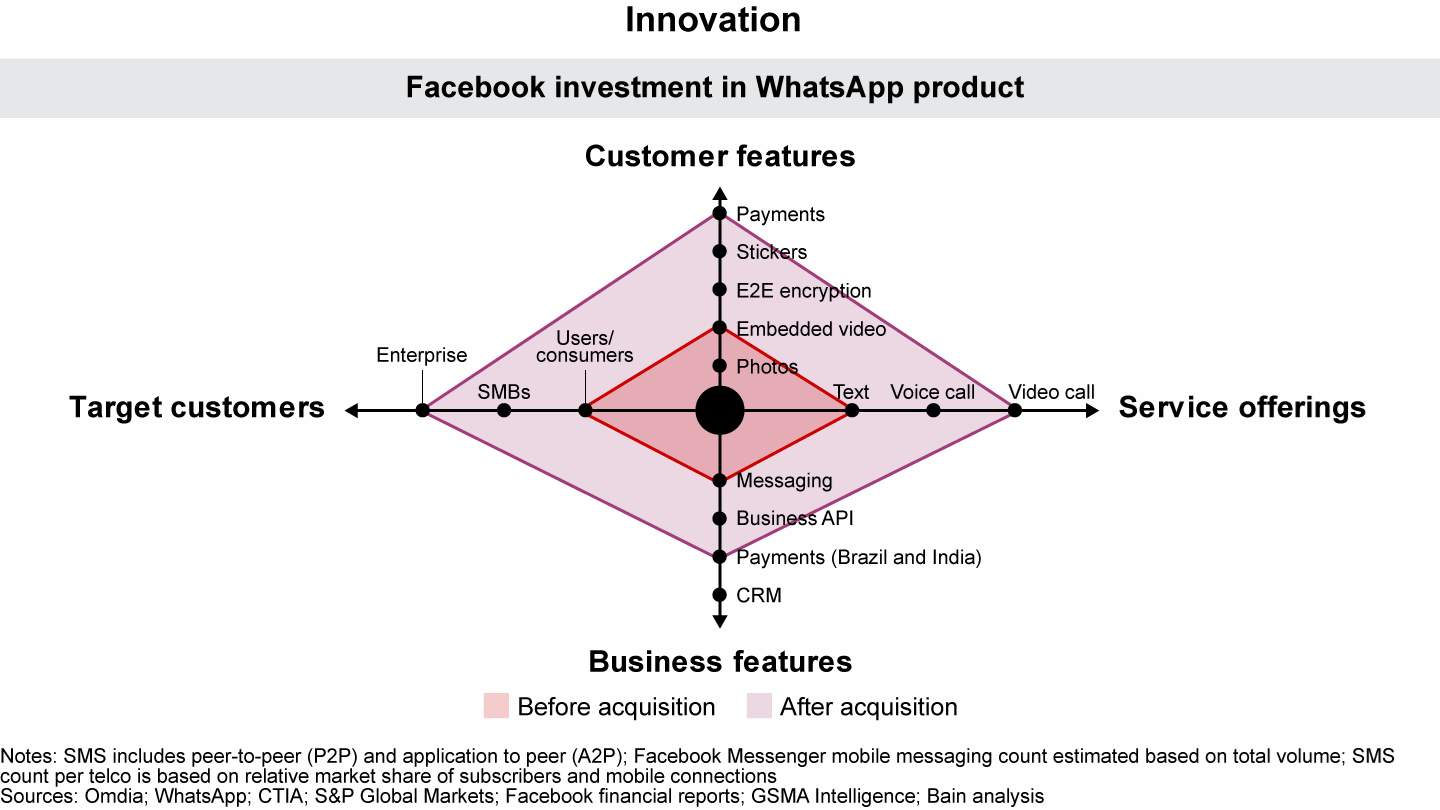
After Facebook acquired WhatsApp, messaging prices continued to fall, the number of credible competitors increased, and WhatsApp expanded its offerings
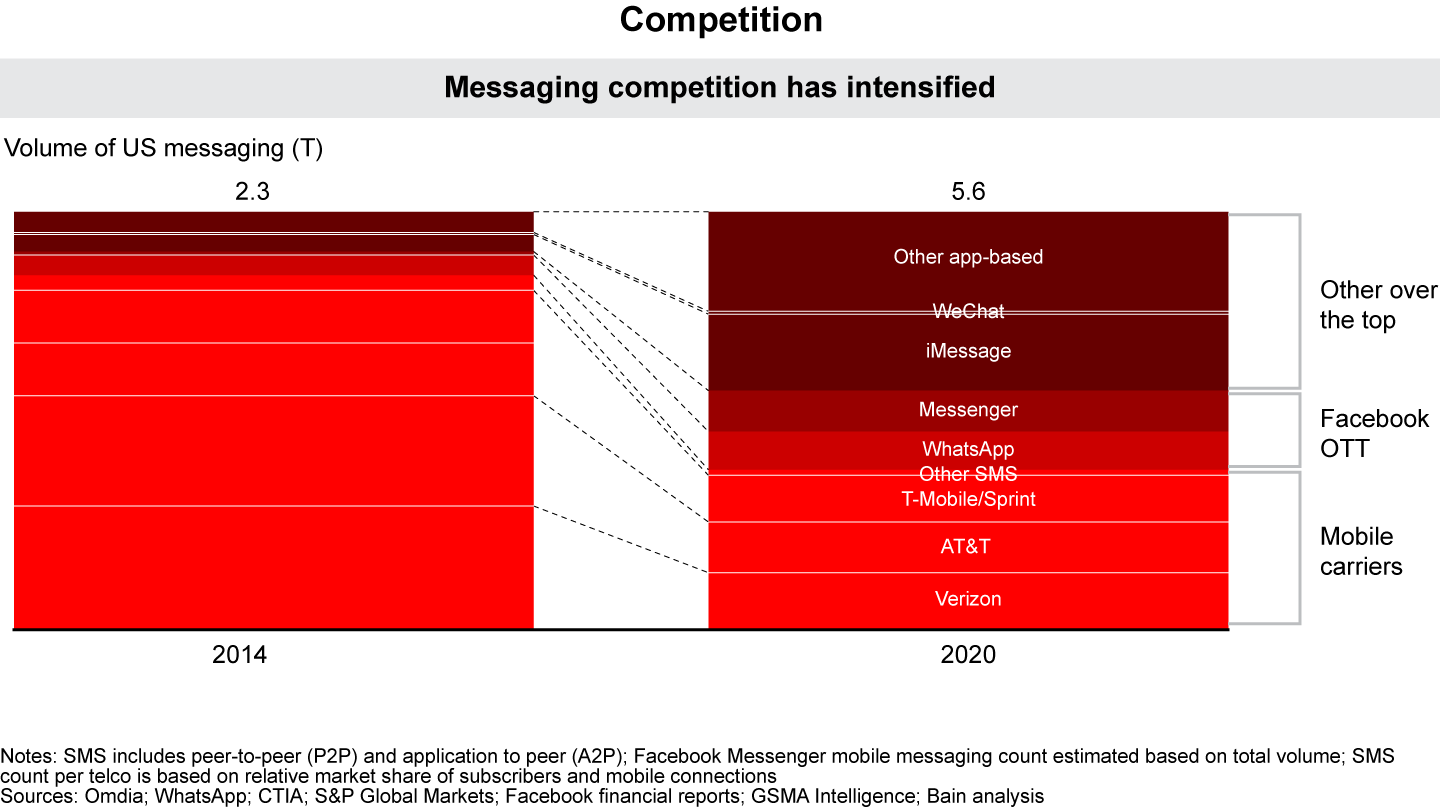
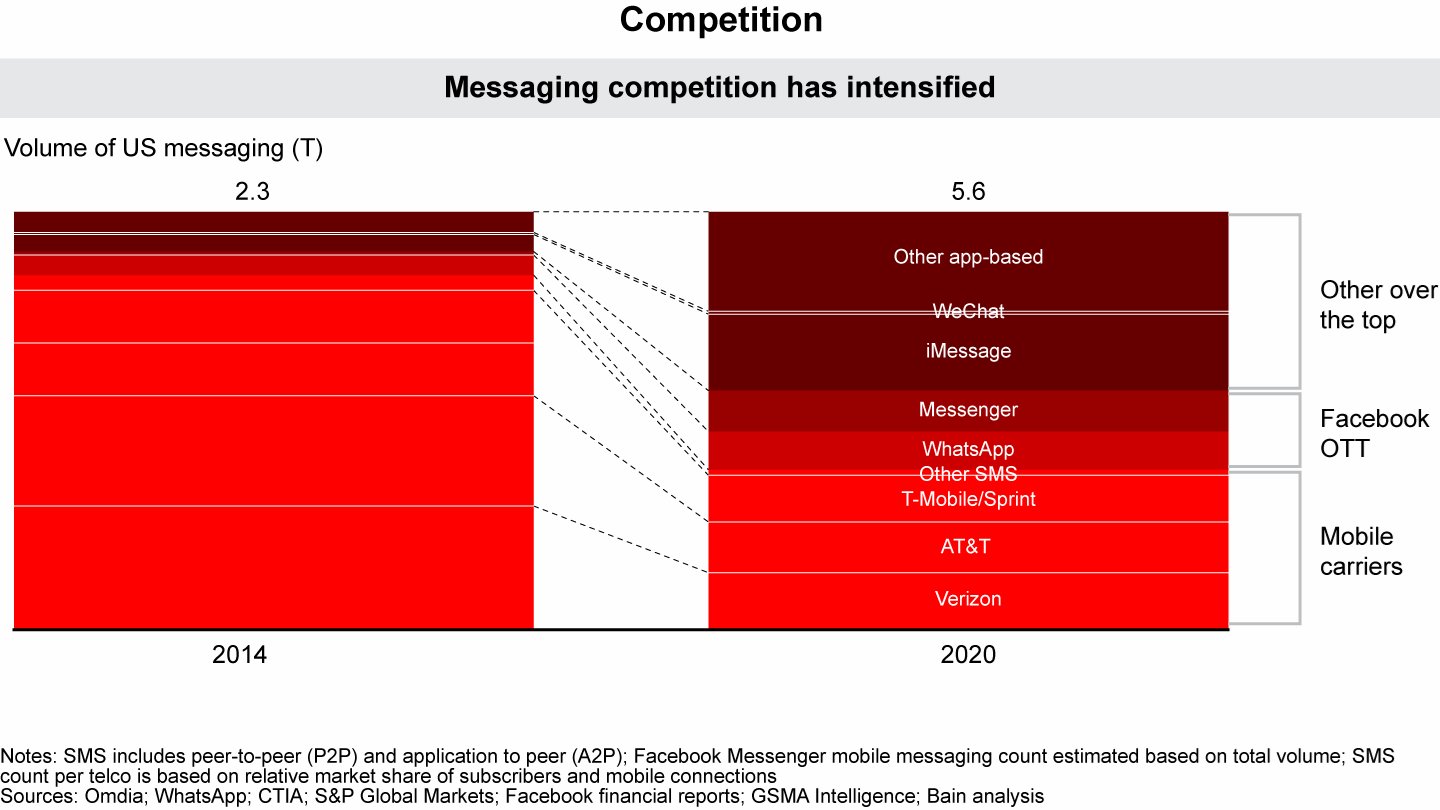
Competition is alive and well
The common narrative is hyperscalers are acquiring disruptive competitors. But their M&A activity is only a small piece of the overall landscape, representing just 5% of total tech start-up exits last year (see Figure 5).
Acquisitions by US hyperscalers represent a modest portion of total tech start-up exits
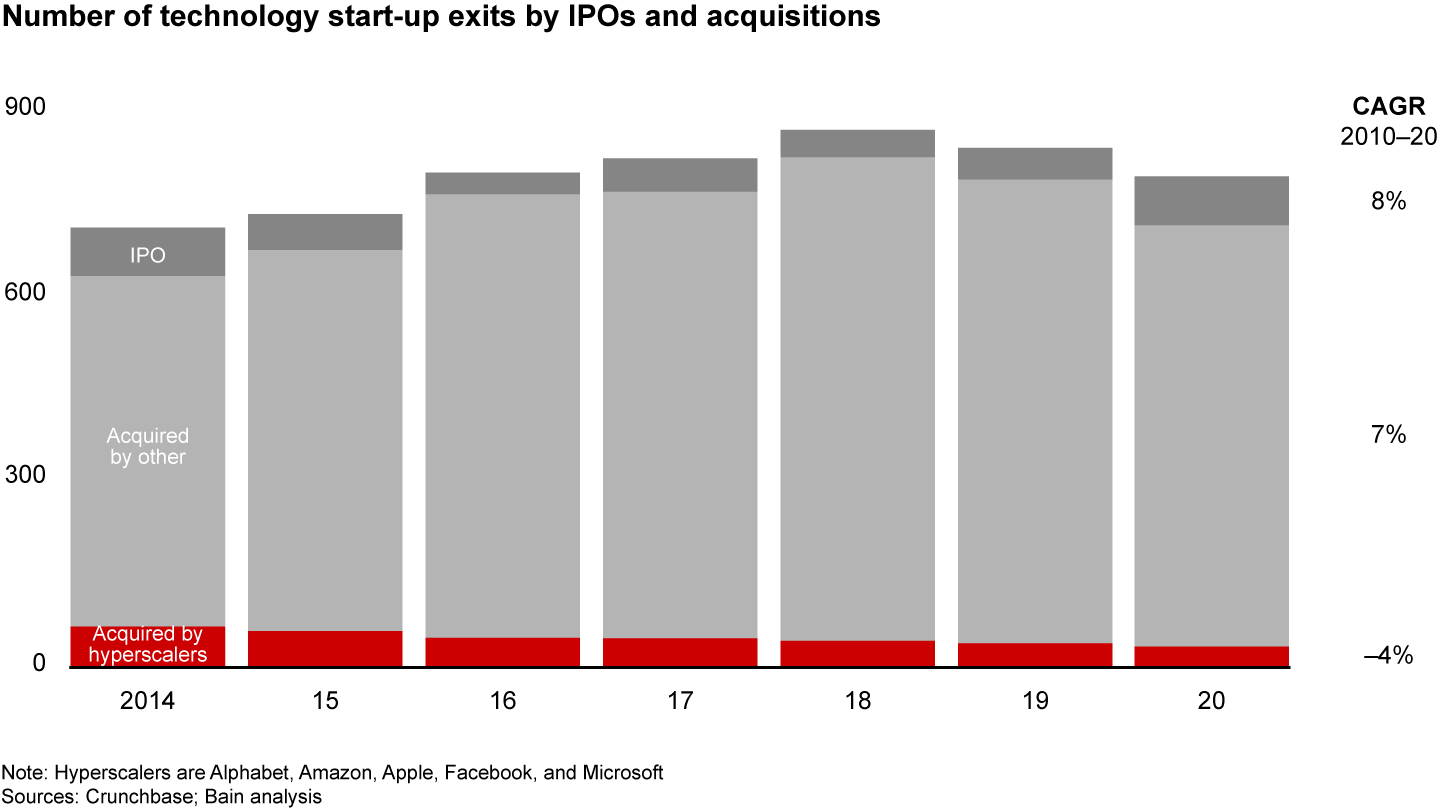
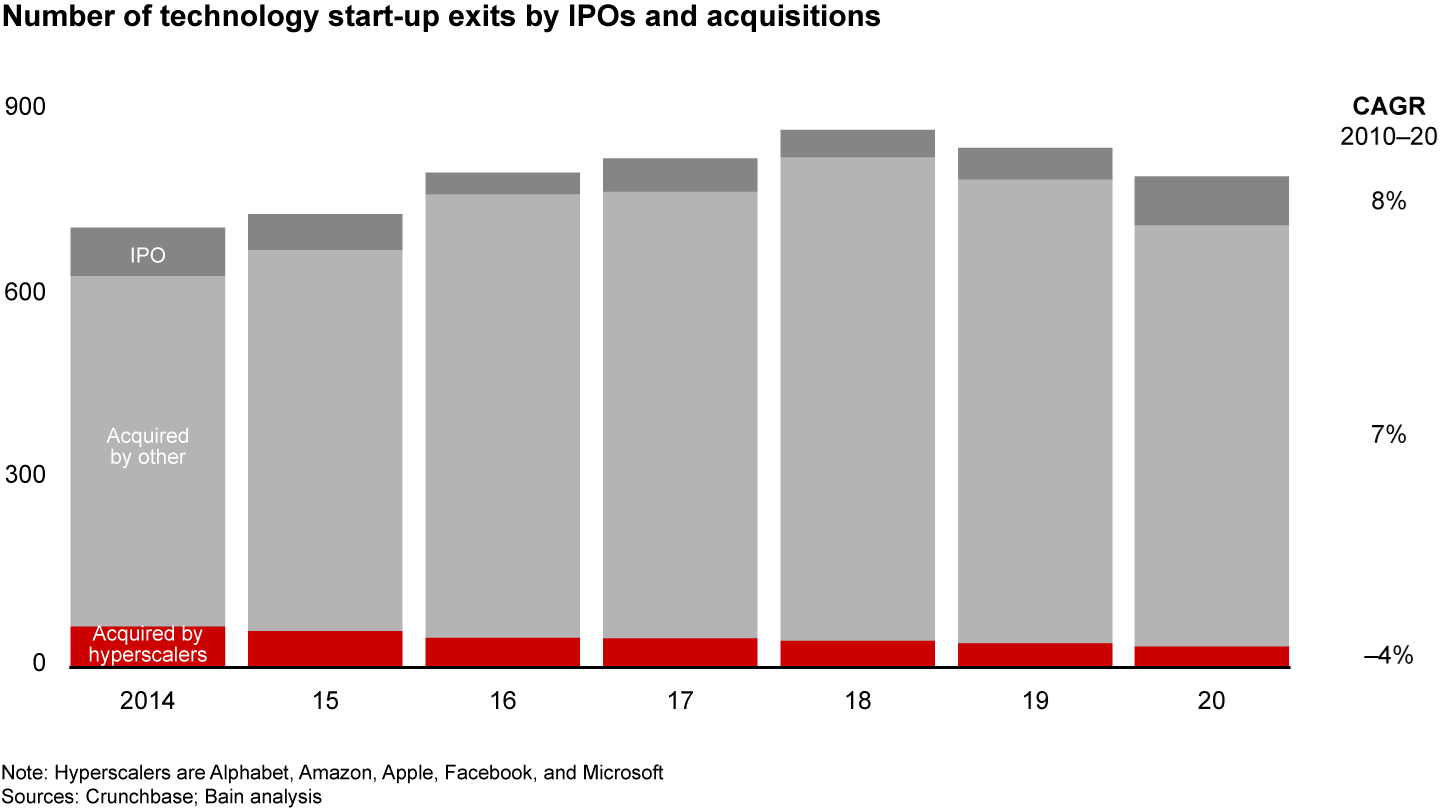
What’s more, their dealmaking actually contributes to vibrant markets. Of the M&A spending that benefited consumers, 82% also saw more competition afterward, according to our analysis. This plays out in four ways.
Increasing the number of credible competitors
The competition between telcos and app-based messaging companies, including Facebook, Apple’s iMessage, and WeChat, has only grown fiercer since Facebook bought WhatsApp in 2014. Since the deal, the number of credible competitors has gone up, as app-based messaging companies’ share of US messaging volume grew to more than half of all messages sent last year. A judge’s dismissal of the US Federal Trade Commission’s lawsuit against Facebook in June signaled that tech companies continue to compete in broadly defined markets, though the FTC later filed an amended lawsuit to renew its case against Facebook.
In video streaming, YouTube helped fuel the proliferation of “over the top” (OTT) video providers such as Hulu, Sling, and Disney+. Now, YouTube competes for advertising dollars both with other OTT providers and traditional television companies.
Pressuring incumbents to innovate
Amazon’s 2013 expansion into grocery delivery with Amazon Fresh added pressure on US grocery retailers to begin offering online ordering and delivery services, and that pressure only intensified after Amazon acquired Whole Foods. Now, every major US grocery retailer offers online ordering and delivery services, either managed in-house or via partnerships. This was true even before the Covid-19 pandemic.
In video games, Facebook’s purchase of Oculus helped push other companies to build products with virtual- and augmented-reality experiences.
Spurring competition between hyperscalers
Acquisitions have also fueled competition among the hyperscalers (see Figure 6). Facebook, Amazon, and Apple now challenge Google’s YouTube for video views. Apple Music, buoyed by its Beats acquisition, competes with YouTube Music and Amazon Prime Music for paid subscribers. Display ads are a fierce battleground among Facebook, Google, Amazon, and Microsoft, even after Google’s DoubleClick acquisition.
Acquisitions have increased competition between hyperscalers
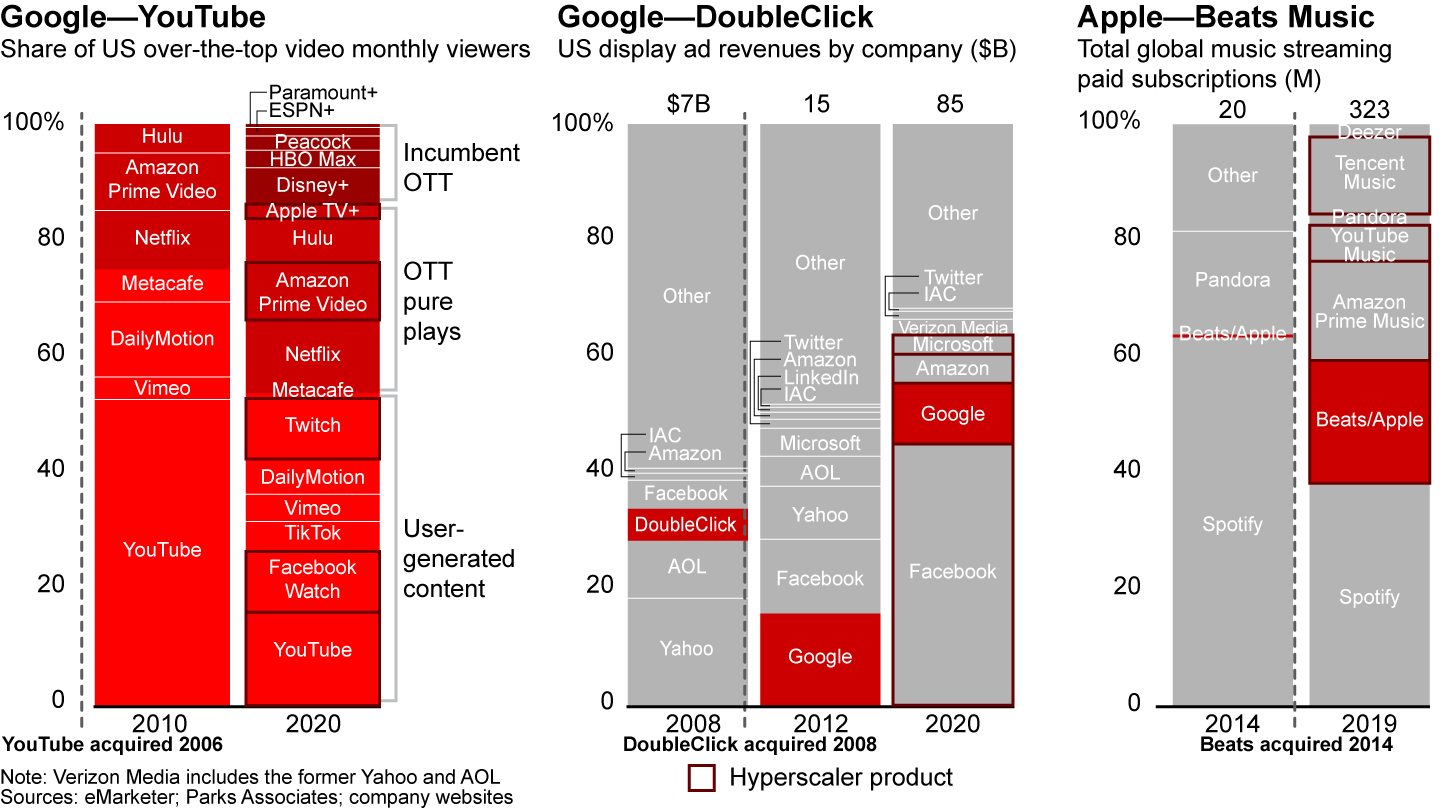
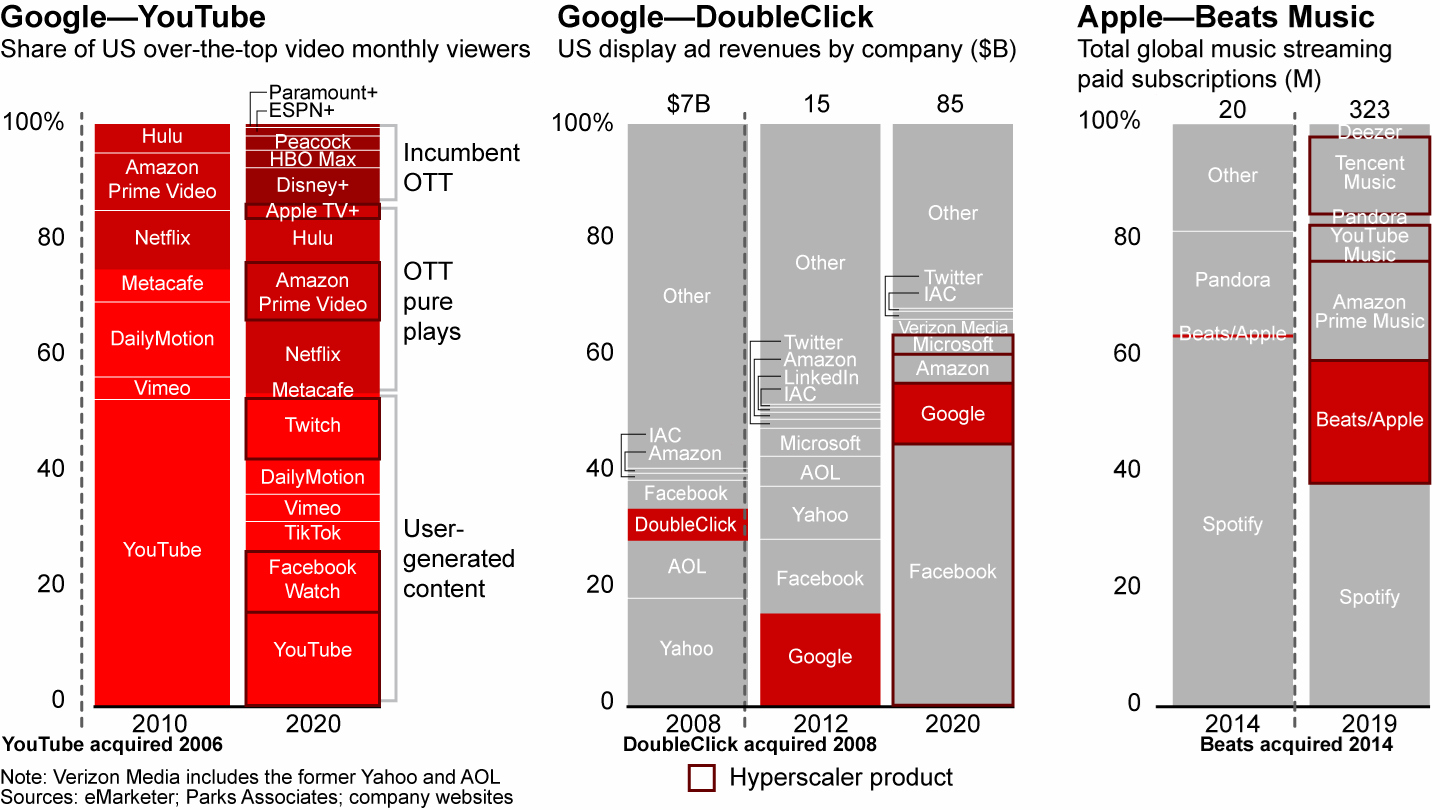
Fueling venture capital investments
Acquisitions power a virtuous cycle in start-up investments by providing viable exits that allow investors to pour money into the next wave of deals. Over the past decade, independent venture capital firms and corporate venture funds that sold 11% to 20% of their start-up portfolio invested in 40% more deals than funds that sold 10% or less of their portfolio (see Figure 7). The gap is even wider for firms that sold 21% or more of their portfolio.
Selling portfolio companies allows venture investors to make more deals
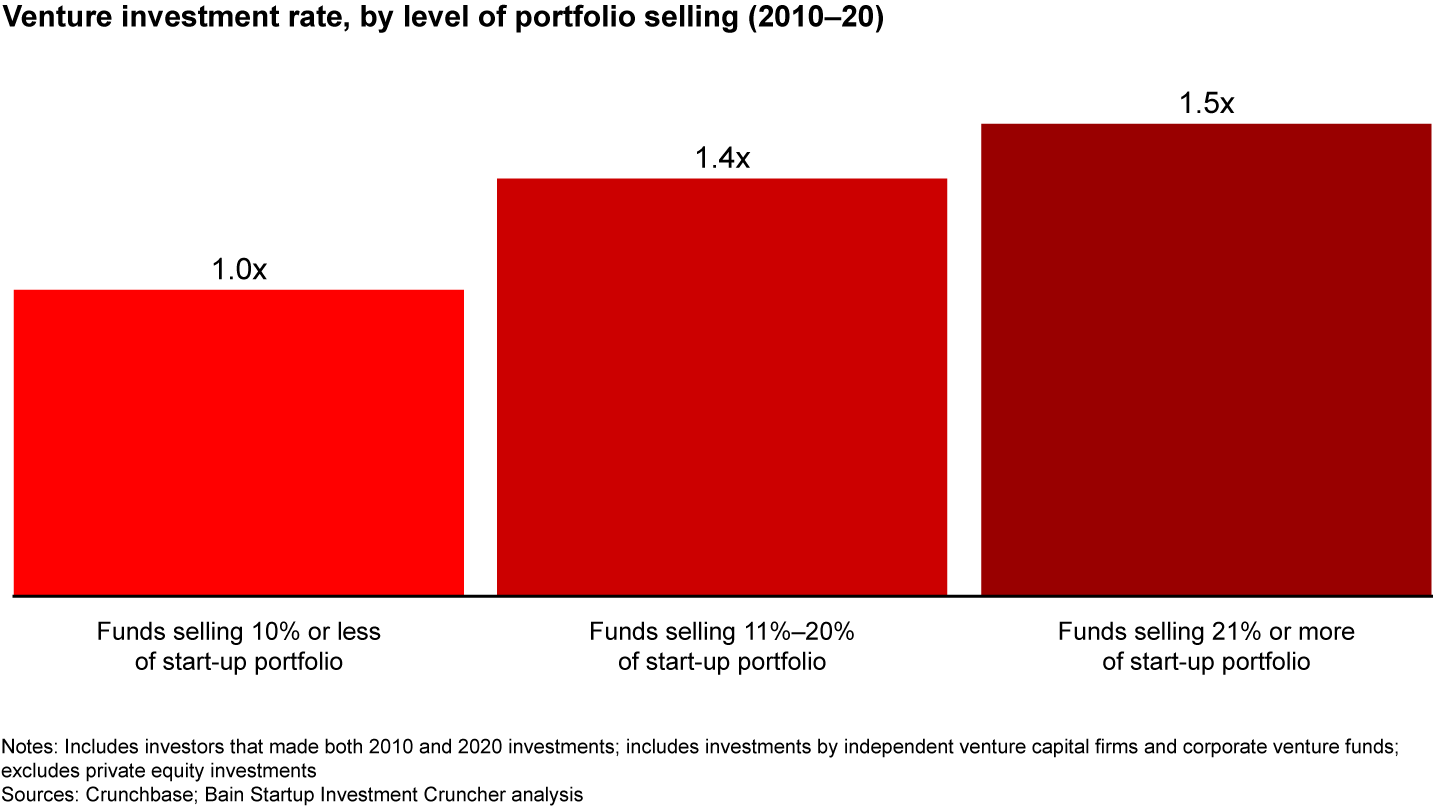
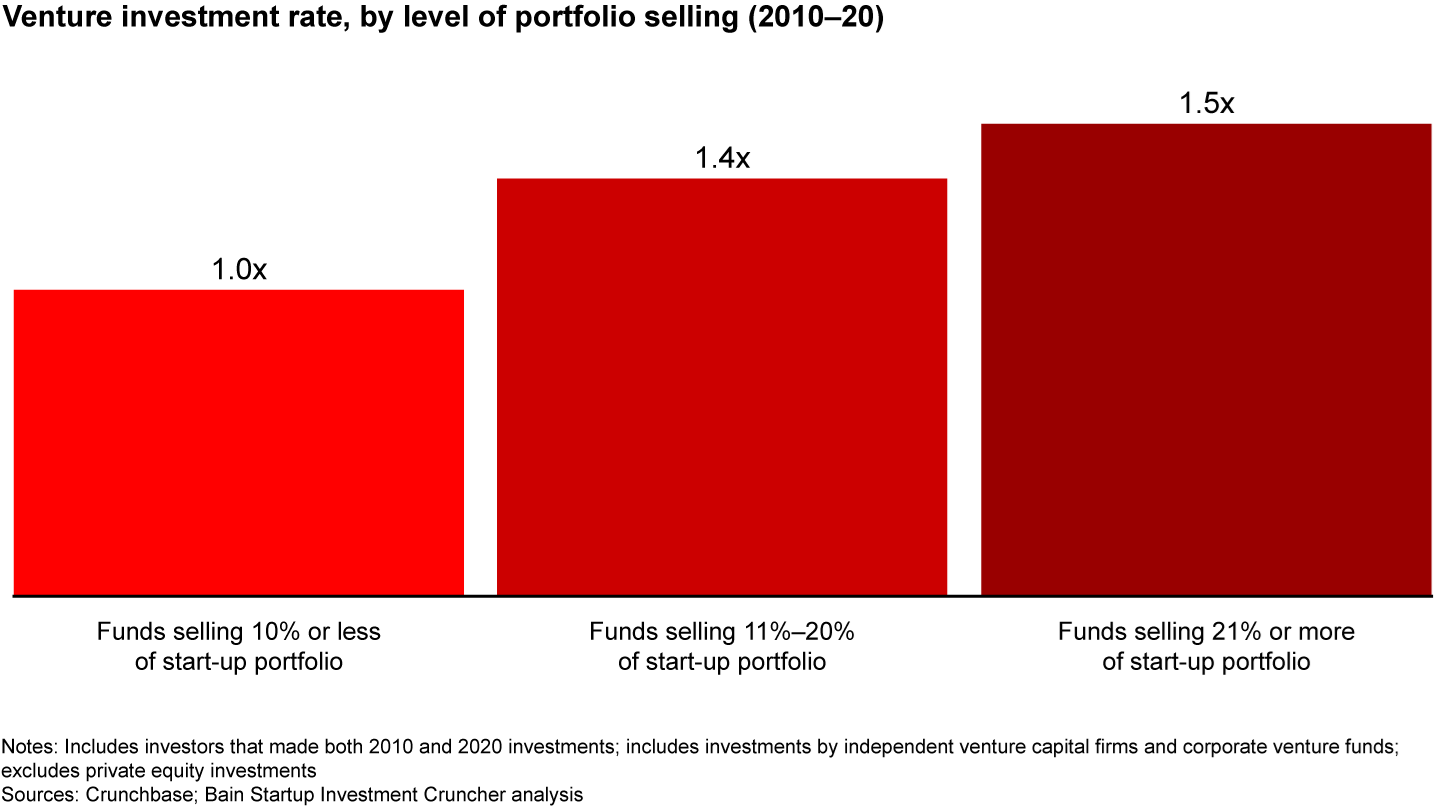
When is more regulatory scrutiny justified?
Of course, not every hyperscaler M&A deal benefits consumers and competition.
In the vast majority of these cases where consumer value and competition were harmed, the acquired company was ultimately shut down after a decline in market share and/or profitability, thereby reducing competition.
Amazon’s price cuts on diapers pushed Quidsi to sell its business, including the popular Diapers.com. After purchasing Quidsi, Amazon raised prices and shut down the business.
The purchases of Motorola’s and Nokia’s handset businesses were both ill-fated acquisitions by Google and Microsoft, respectively, that may no longer have been viable standalone companies given their decline in market share and innovation even before the acquisitions. Similarly, Microsoft wrote off its aQuantive purchase after a failed attempt to shift the core business from display to search ads, and Facebook shuttered LiveRail due to the low quality of ad inventory and what turned out to be a more promising alternative product developed internally (Audience Network).
For the remaining deals that reduced competition, the acquirer bought a target that was also a market-share leader in the same sector. For example, Google’s acquisition of DoubleClick in 2008 allowed the No. 1 competitor in digital ads to purchase the No. 5 competitor. By 2012, their combined share of US digital ad revenue was more than four times the size of their next-largest competitor. But our analysis determined this group of deals had a neutral effect on consumers, and it represents only 3% of total acquisition value in our analysis.
What about data?
A common refrain in tech is that companies with the most data win. But there’s a concern that if companies consolidate data, they might use it in combination with algorithms to steer users toward inferior products that are more profitable. While this can result from consolidating market power after acquisitions, our analysis found this rarely happens in hyperscaler acquisitions.
Facebook’s acquisition of Instagram is often mentioned as an example of data consolidation’s potentially negative effects. However, Instagram only had 30 million users and no ad business at the time of acquisition. Under Facebook, Instagram expanded from a simple photo-editing app to include messaging, social stories, live broadcasts, and shopping. While Facebook has been good at increasing the size of Instagram’s data sets and effectively monetizing them, there’s good evidence that it was the parent company’s investment in the user experience and advertising engine that allowed Instagram to grow to more than 1.7 billion monthly active users, according to a UBS report.
It’s healthy in any market-based society to have a vigorous debate over the benefits of scale to both consumers and competition. That can and should continue. Hopefully, this set of insights provides another useful perspective for both acquirers and regulators as they work to ensure these deals continue to create—not destroy—value.